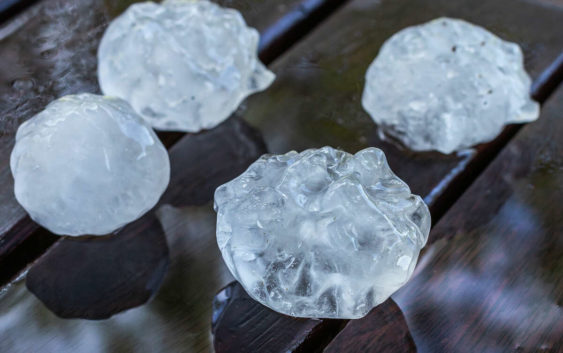- National memorial to honor NC firefighter who died on duty during Hurricane Helene
- Gov. Josh Stein extends State of Emergency for western NC wildfires
- Governor Stein extends state of emergency for NC wildfire threat
- Governor Stein extends emergency in 34 NC counties amid wildfire threat
- Texans can buy emergency preparation supplies tax-free April 26-28 ahead of severe weather season
San Antonio storms threaten 'very large hail,' damaging winds

San Antonio’s Tuesday weather forecast includes the possibility of “very large hail” during the afternoon hours.
ImagePatch/Getty ImagesSan Antonio is under a severe weather threat, which includes “very large hail” and thunderstorms on Tuesday, April 12, afternoon. The National Weather Service says the development of storms depends on a “cap,” or temperature inversion eroding, allowing a storm to rise.
“Essentially a thunderstorm is a quickly rising parcel of air and in order for the air to continue to rise, it needs to be warmer than the environmental temperature,” Keith White, NWS meteorologist, tells MySA.
White says the area didn’t see storms on Monday, April 11 because the capping inversion didn’t happen. There is a “much better chance” that a dry line moving in from the west will erode the cap and allow storms to tap into the energy above it, according to White.
“If the storms are able to form which, right now we’re still thinking is about 30%, 40% chance, they will likely become strong to severe very quickly today,” he adds.
San Antonians should be weather alert around 2 p.m. White says the potential storms will move east well before 10 p.m.
“Large to very large hail is the primary risk today, potentially two inches or larger with any storms that form,” White says. “But certainly damaging thunderstorm winds are also very possible and we can’t rule out an isolated tornado, but chances for tornadoes increase further to the northeast of San Antonio, especially northeast of Austin.”
White says all of San Antonio is at a level 2 of 5 risk from the storm prediction center. He adds that the storm activity is part of Storm Silas, that’s affecting the U.S. from Minnesota to Central Texas.
Read more from Madalyn